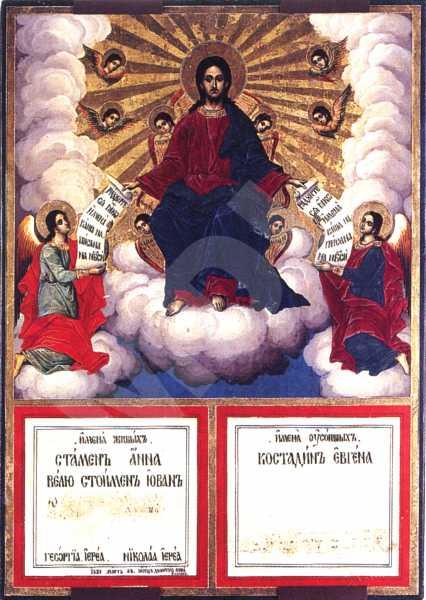The Blessing Christ
Type:
Icon
Period:
22.
03.
1833 year
Dimiter T. Molerov, born in 1780 in Bansko, son of Toma Vishanov the Moler. One of the best-known painters, a representative of the Bansko school of art, a disciple of his father, influenced by the art of Athos. Author of the murals of the naos in the St Archangels' paraclete in the Rila monastery, the murals in the Church of the Assumption of the Virgin in the Pchelino dependance. In 1840 and 1841 together with his son Simeon Molerov he paints the murals and the sponsors' portraits in St. Nicholas' and St. John of Rila's paracletes in the principal church in the Rila monastery. Among D. Molerov's major achievements in iconography are the following icons: St. Nicholas (1816) from St. Archangel Michael's church in the village of Leshko, Christ All-triumphant with Angels and Cherubim (1833), The Nativity and a Crucifixion from St Elijah the Prophet's church in the village of Usenovo. He has also worked in Belgrade on an invitation by Prince Milosh Obrenovich of Serbia. He died in 1870 in Bansko.
Dimmensions (cm):
66
/ 47
/ 3
Location
Country: Bulgaria
Province: Blagoevgrad
Town: Bansko
Museum: Museum complex
Source
Country: Bulgaria
Province: Blagoevgrad
Village: Gostun
Church: St. Prophet Elijah
Description
In the icon's center, painted on a preapplied gilding is Christ, seated, holding in his both hands rolls with texts. On his left-hand and right-hand sides are two kneeling angels, and behind and around him eight cherubs.
Iconographical technique: Tempera
with guilding.
Base material: Wood
The ground coat is of plaster about 1 mm thick.
State, restoration traces and comments
There are numerous damages along the entire external frame. There is some loss of the ground coat and of the painting layer on a area of 1,5x5 cm. The painting at the ends of that fragment is heavily blistered. There are great losses of painting layer in the area between the figure of Christ and the two rolls, held by the angels. They had been caused by rubbing and scratching with a sharply pointed object. There are similar losses on the gilding, caused by the same factors. The text with the smaller letters in the two lower squares is almost completely erased. The varnish cover is uneven in its thickness and soiled in various degrees. In its two extreme parts, over the clouds, it is badly soiled and grown dark. There are no traces of any previous restorative intervention.


